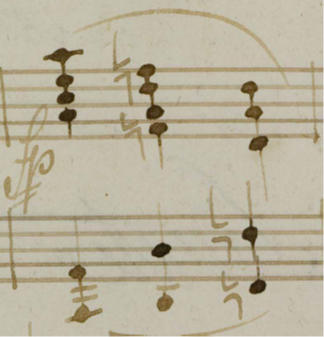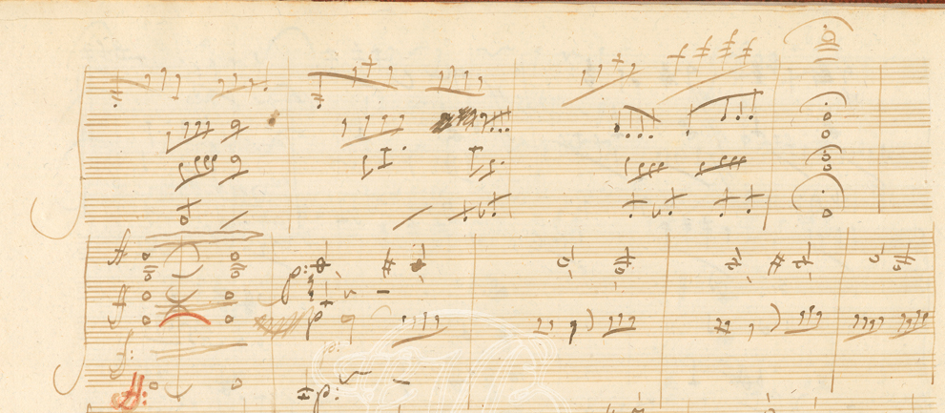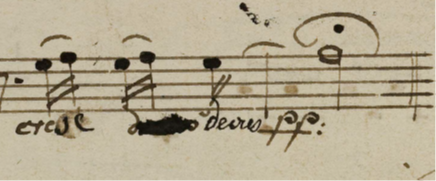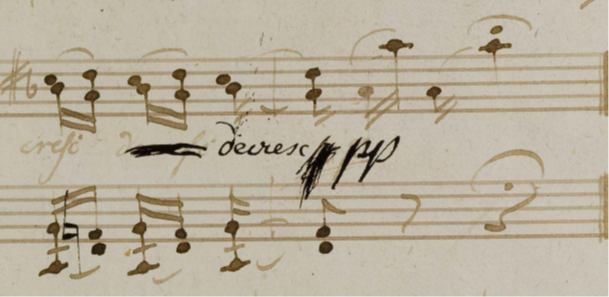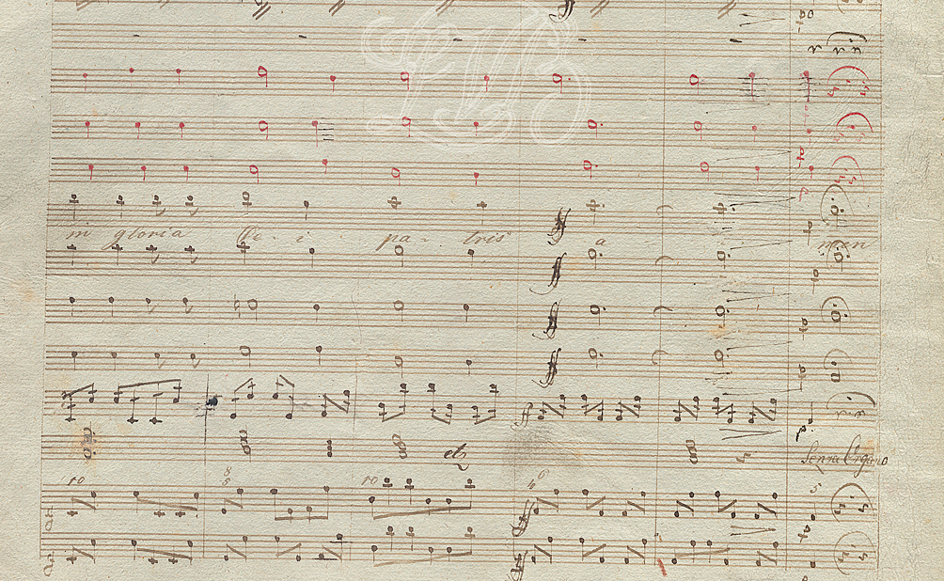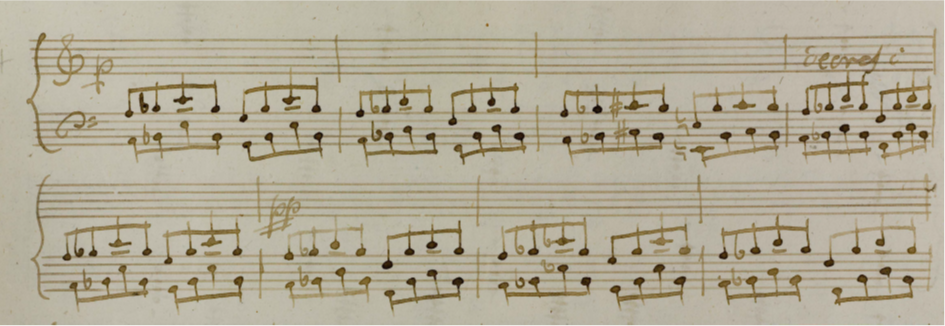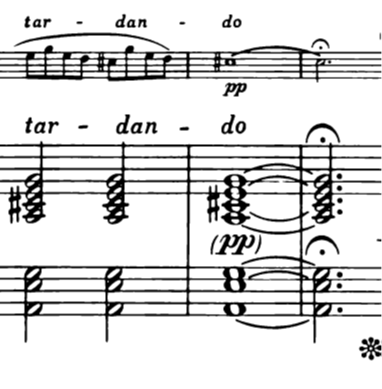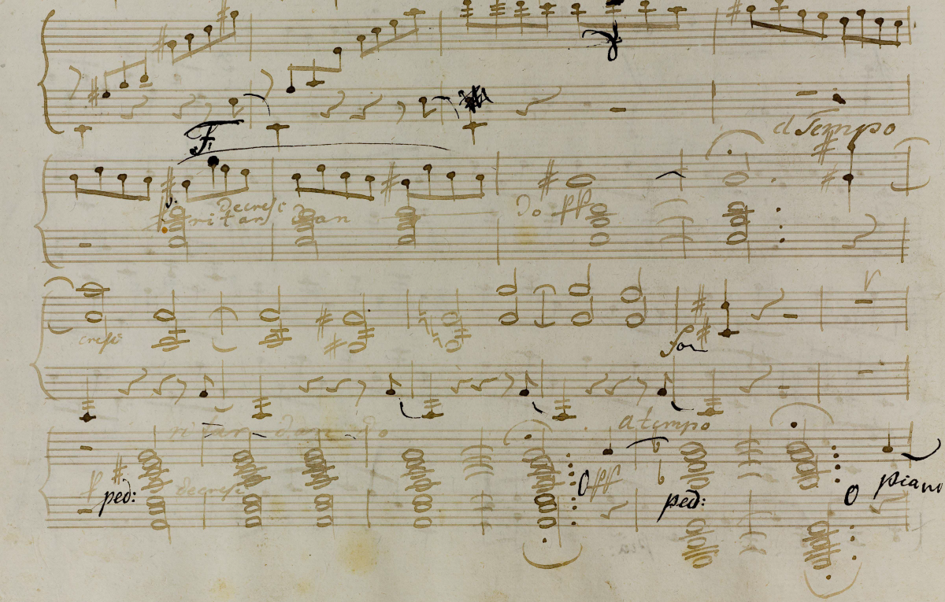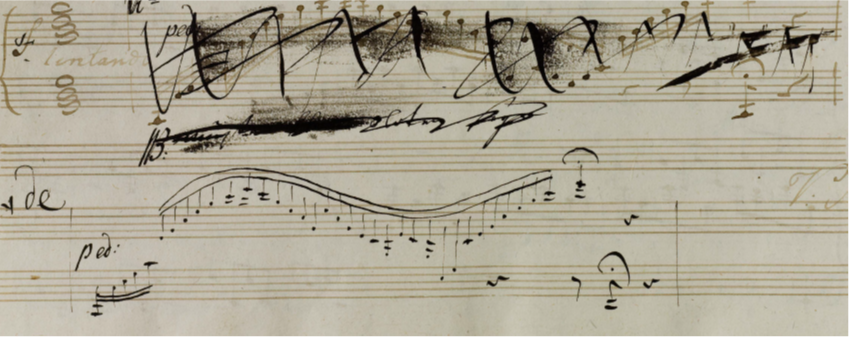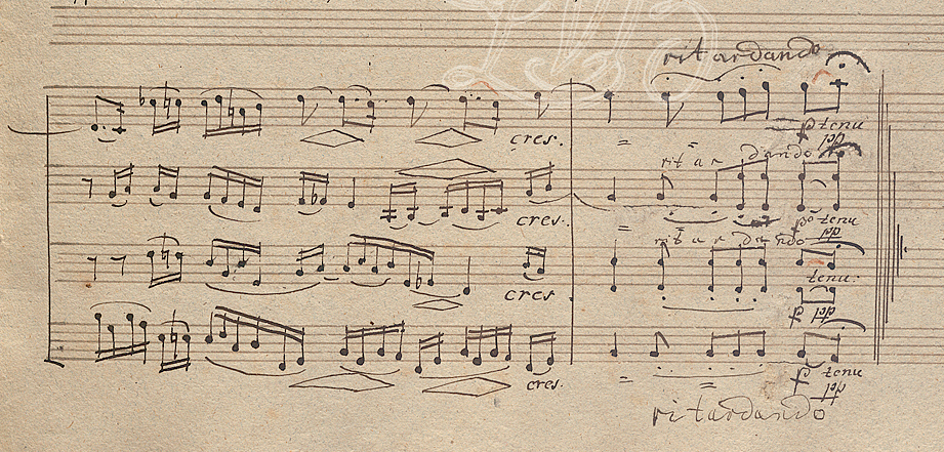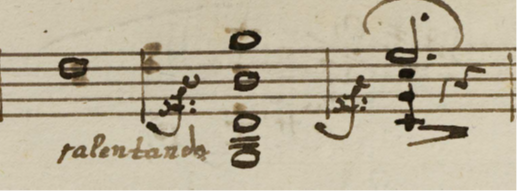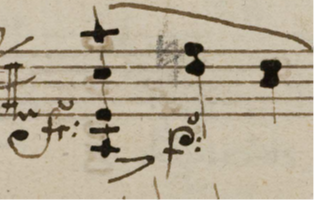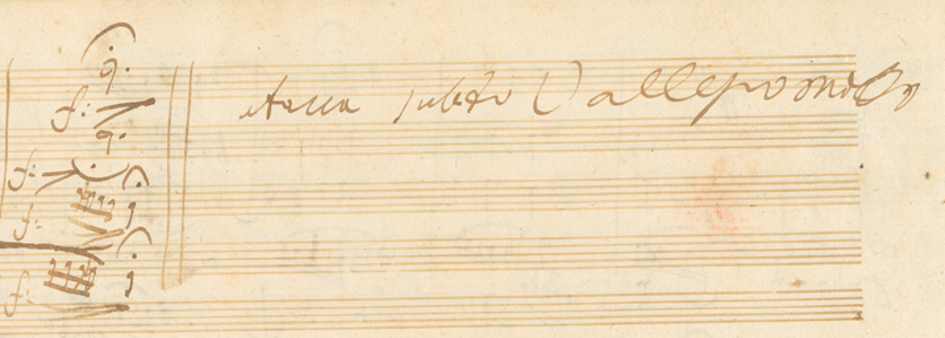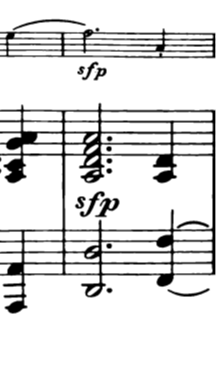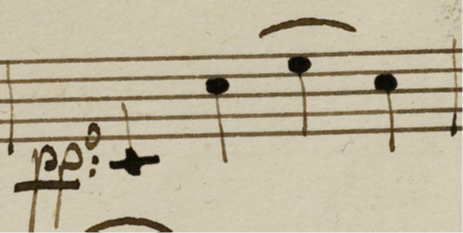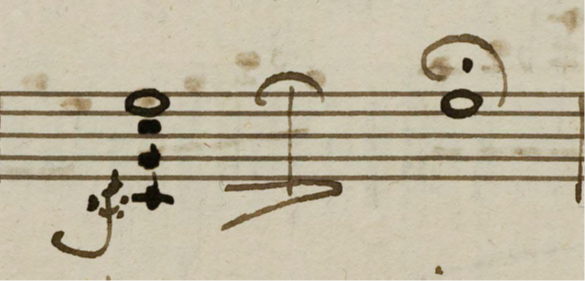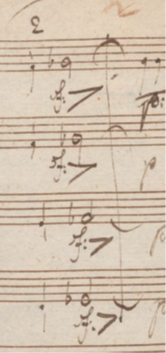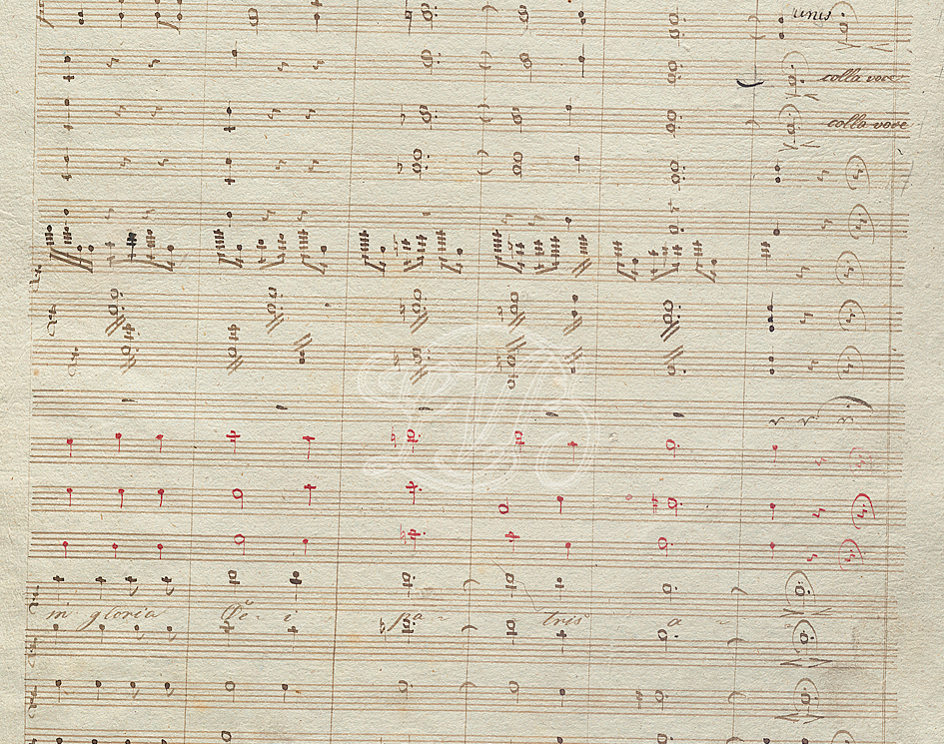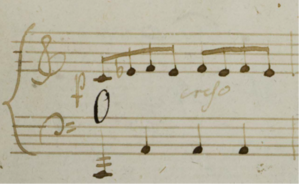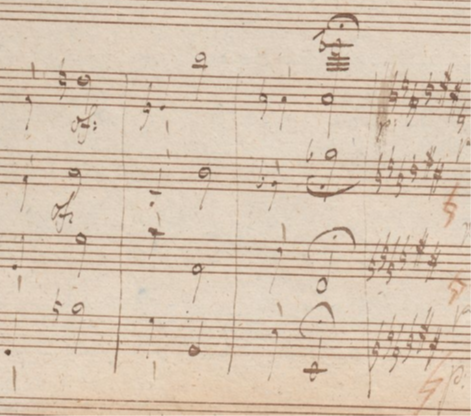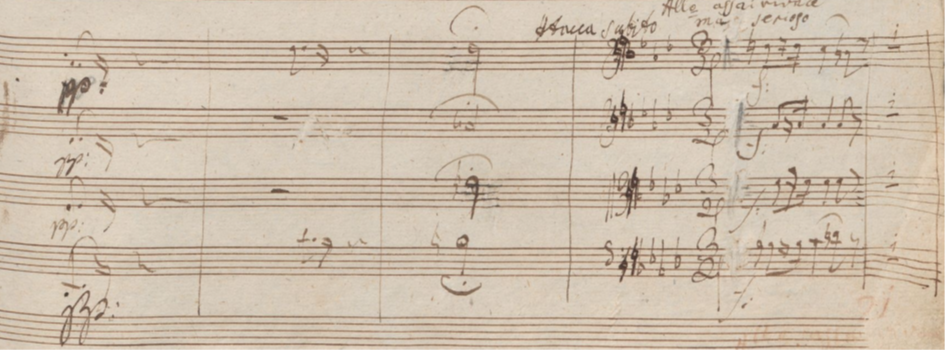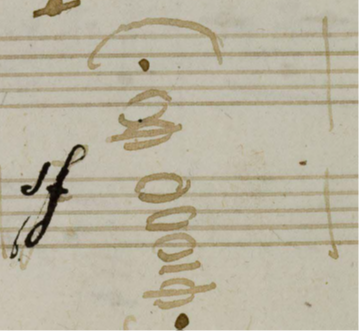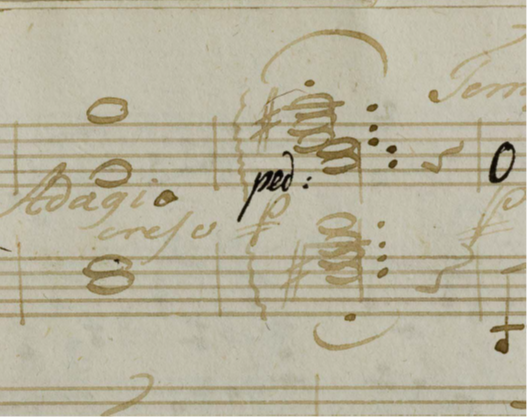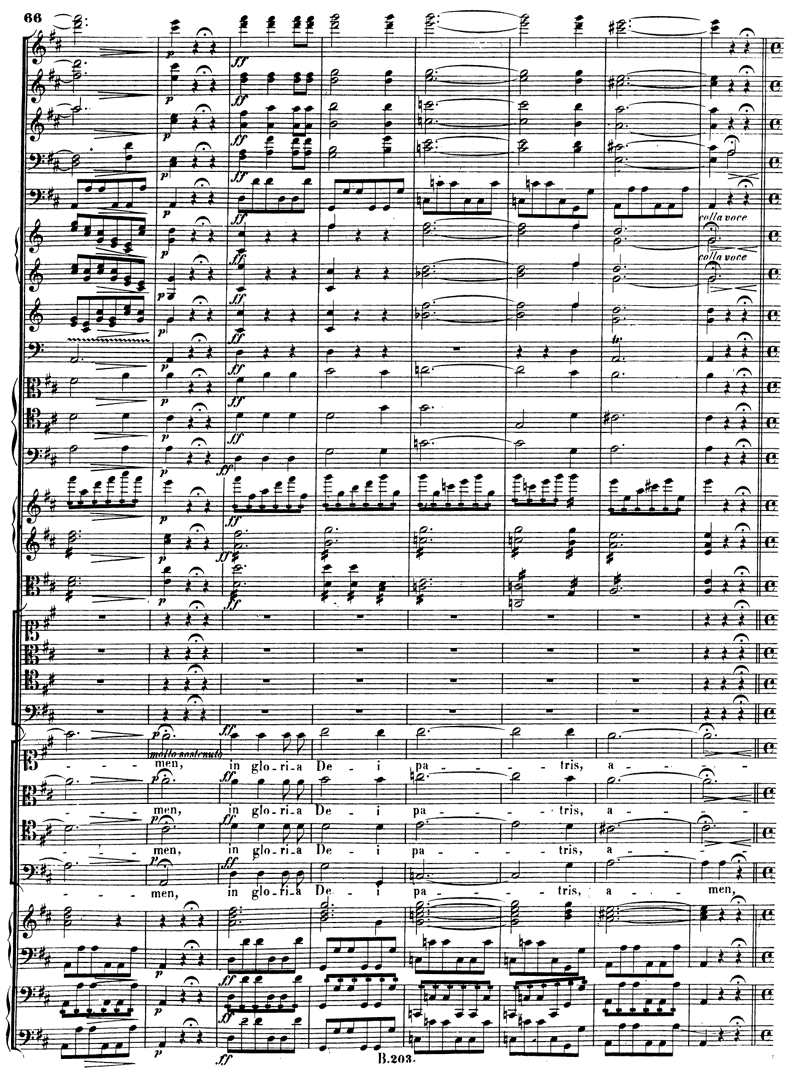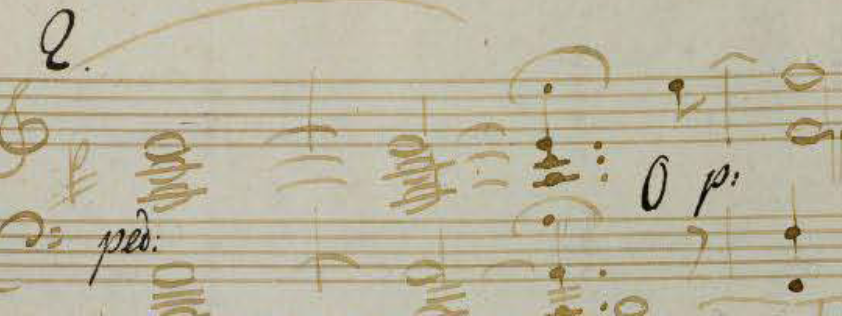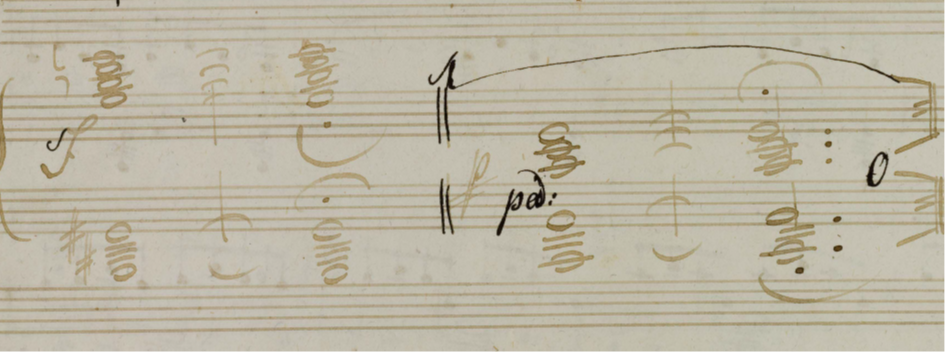The fact that the ‘decresc’ marking has been delayed shows the sudden quality of this fermata : had it been more prepared by a longer decrescendo, it’d have been shorter and still within the decrescendo gesture. Since the now longer crescendo is proof that the gesture is now bigger than a simple ebb-and-flow (meaning that we leave the dynamic we had at the beginning of the crescendo, as Kitchen puts it in the difference between a diamond swell and an ‘open’ swell), the pp could be seen as a subito, with the ‘inégal’ offbeat slurs turning into a very pale and ambiguous (emphasis on the main beat (eigth note)+ emphasis on the beginning of the swell= agogic oxymoron) figuration.
I think some structural integrity must be kept because the octave leap calls out the upbeat to the Presto, while the material of the introduction is very different from that of the Presto, like in the transition from the Allegretto to the Scherzo serioso in op.95.
The first movement of the sonata is very tempestuous, in scale akin more to a symphony than to a classical sonata, and its notation poses many problems to performers as to the limits the work reaches in terms of instrumentality. One of the difficulties of this very straining work is how forceful the arrivals and tensions need to be.
The opening
In the case of the dynamic of the piano bar 5, I think the violin’s diminuendo imitates the natural decay of the piano. This conundrum recalls the opening of the ‘Pathétique’ piano sonata, which opens with a fp chord ; I think a release needs to happen between the ‘f’ and the ‘p’, simply because a release is built in the instrument : the same thing happens in the Kreutzer sonata, the fact that the ‘p’ following the ‘f’ is twice underlined shows that it nonetheless must be sudden, for example by dropping the left hand slightly before the second quarter note. (NB. The violin’s separate part for the Kreutzer sonata has dubious markings concerning dynamics : it seems that all the ‘p’ are underlined : I take it that in fact it was common practice to add a line under all ‘p’-s when handwriting)
Closer to the Kreutzer sonata, are a couple of more examples showing Beethoven’s ability to understand fermatas.
Fugue from the op.59 n.3 string quartet, lead-in to the recapitulation, and lead-in from the Menuetto to the Fugue : the first is clearly tenuto, otherwise the impact of the next diminuendo/release wouldn’t be understood (this is wonderfully put into effect by the Guarneri Quartet’s video with their upbow bowing on the fermata.) https://www.youtube.com/watch?v=6FW_aUDNE3k 2:08 mark
In the second fermata, the diminuendo starts right away, since a crescendo precedes this forte, the summit of this curve doesn’t need a further reinforcement in this very suave section of the quartet. This will help us understand the fermatas that follow quick runs, and how to deal with their preparation.
Having observed some of the more dramatic and diverse fermatas Beethoven uses, we'll try and adapt our thinking to the numerous ones we find in the first movement of the Kreutzer sonata, the reason I chose fermatas is that they are what carries the immensity and heroic tone of the movement throughout: weighing each of them helps us understand the scale of the work. It's also an often overlooked element of music when taking lessons.
I think the upbeat, as many performers play, should be longer than a presto quarter-note. Once again, the Pace/Kavakos performance treats these past ruminations of mine wonderfully, almost as if they knew the manuscript.
Should, as in a Mozart work, the piano dynamic apply to the second note of the bar, also very much imitating the violin’s own dynamic ?
Going away from fermatas, but staying in the category of held notes and dynamics, the next question a performer might ask is related to this spot :
At the end of this sepulchral section, the pp shows us the way to the normalcy of musical form. Due to this marking (corrected from what would have been a ‘p’ identical to the preceding bars), and the placement of the O pedal sign before the note, I think there should be a break in sound (the only one therefore in the section), while the fermata, like many others in this movement, should be long (carried over two bars). The next fermata:
Fermatas
The case of fermatas is a difficult one, especially in this moment of Beethoven’s development. While earlier, all fermatas must be diminishing in volume, he tends to use the word ‘tenuto’ later to indicate a sustained, longer, fermata, while he uses some dynamic signs to describe the gesture of said fermata, also drawing from his knowledge of the instruments he uses. For example, in a very conceptual work like the Quartetto Serioso op.95 :
A conclusion takes shape progressively :
A blend of the aforementioned theories leads me to believe that the ‘special’ dynamic markings appear in two cases at least :
- When the form reaches a turning point
- When the dynamic used stays the same for a long time, or must stay the same
- When the dynamic used stays the same for a short time, and it is commended to the performer to observe it carefully
- When the dynamic used is in an uncanny register or voicing for its natural occurrence to happen.
As can be seen, some of these conditions might contradict each other.
this can be treated as a dramatic ‘aside’ where one of the characters makes a personal avowal to himself or herself. There is here also a sense of failure, failure to return to the theme, in that the energy is drained and barely contained : this gesture is quite typical of Beethoven’s middle period large scale movements, a moment of stillness faraway from the harmonic landscape of the work. Indeed, from this point Beethoven can build again with a quite uniquely entirely written out ‘piano’ dynamic in the piano part. One thing I’ve had the pleasure to witness in performance was in Boston in February of 2014, where all the dramatic and human qualities of the work, by Enrico Pace and Leonidas Kavakos : https://youtu.be/s7pp_T6YIZU?t=554 ; the appoggiatura bar 322 opens new spaces in the dialogue between both instruments, in a truly lyrical way, marking the threshold into a sort of sacred, separate space, within the work, in the next following bars.
this is a hypothesis of what might also have been the transition into the recap (without the g minor chords)
The end of the development, the pedal on V classically leading toward the recapitulation is covered with dramatic turnovers and changes of direction. The recitative, introspective quality of the music here is miles away from the contrapuntal energy of the development. The first fermata, being the V-pedal one, is the more conventional, the one that ‘should’ bring us to the return of the first theme. There should be no break, nor should it be too long, otherwise we would actually expect a return : only with the violin’s arpeggios bar 314 should we realize something is afoot. Each of the ‘ritar-dan-do’ (note the spacing) should be sudden, as their dynamics are, with the second one even more emphasized (this V of D minor chord could actually lead us into the recapitulation :
Must there be a moment of acoustic emptiness before the Adagio, as the manuscript might show, due to the odd pedal stop in the manuscript ? Is this written like this in order to bring up the strength and calm of the voicing and harmony of the Adagio ? Note that the violin part’s manuscript also shows ambiguous placement of the Adagio :
bars 36-37 : here the piano, for once, does not diminish the gesture of the fermata, due to an embellishment/cadenza covering most of the piano’s range (it is my theory that this work was written with a piano going up only to the high F). The Beethoven-handwritten O on the downbeat of bar 37 indicates that the Pedal must be lifted after the violin’s E upbeat, recalling the E-E gesture from bar 27. Many pianists emphasize strongly the C tonic of this chord, showing the grandiosity of the unexpected chord and its stark contrast with the following harmony. No breaks here, except in dynamic. The piano must be louder than the violin when the upbeat is performed. (like the op.59 Fugue example)
While this bar corresponds to bar 4, I don’t think there must be silence in this case, because the piano takes over with the same E as the violin.
Very much like Beethoven changes the swell and carries it out in the first adagio into the second bar (with the C), Kavakos lingers on the F to extract from it a very expressive power. Like the manuscript (and Henle, depending on the reading), Pace creates a small silence between the F and the B flat chord by lifting the pedal.
opening time / suspended time
Later in Beethoven’s life, we find these new ways of interpreting fermatas as a composite of musical shapes :
This fermata, which is akin to the ‘lifting of veil’ (Solomon 2004: 67), could shudder and indicate a drained-out drive, more than a simple diminuendo, a short, vocal swell. Later in this chapter, we’ll see how this fermata could be held and undiminished, by looking at a similar spot in the Kreutzer sonata.
(above: 517 on, below, b.518 and continuing) This bar 523 was specifically corrected by Beethoven for the pp (pp in the piano, pp in the violin) to line up not with the first bar of the hypermeter (which would mean the previous bar), or the next one (it seems to be a mistake, since it only appears in one part). The unevenness of the pattern between harmony and dynamic must be brought up, and despite the decrescendos, the pp must be subito, not only due to its vigorous misplacement but also its underlines. As to the underlines, they indicate that the performer must not swell up despite the violin’s slur. Also, there are two consecutive hypermetric downbeats, the first on the bar before the example shown, then on the first bar of it. The same dynamic recommendation is made bar 571 :
NB. This is nothing but a personal note and Sherlockesque observation : I have no idea who put the natural in front of the f sharp there. This is the only pencil mark in the violin part. Should the note be corrected indeed to a f natural ? I have run experiments, and it is very interesting then that both instruments are in imitation and not in conflict in that case, with only the piano finding a way out of A major, both instruments having the dynamic and the harmony being restrained, which would correspond to van Oort’s theory that parameters, like language, use redundancy to explicit its own logic : for example by subduing expectation with more than one parameter, inciting contrast in more than one way. This is interesting also in that the f natural implies that the sonata is from its second note already invaded by ‘a minor’ instead of the first musical phrase being set entirely in the home key. I have searched for other examples of double-exposition where all harmonies are different, and only the violin concerto, with the second subject, shows this light-and-dark contrast between two occurrences : but it starts with the brighter one. No edition refers to this mysterious f natural here. It changes in fact the whole structure of the movement, with the first two phrases of the Adagio introduction, in the case of the f natural, mirroring the first two phrases of the main Presto section (with in each case, exposition in the violin, and developed repetition in the piano). This to me, ranks even higher in terms of musical mystery than the A sharp/A natural conjecture before the recapitulation of the first movement of the Hammerklavier sonata.
With very high artistry like this, directionality seems to come from music to music itself, in a very subjective and objective manner, beauty moves around with itself.
So this is the end for the Kreutzer sonata, and we can see that some of the more contemplative characters one finds in this music comes from a very carefully planned out idea about the general form of the work. These 'sacred' moments need not be lingered on for too long in order for them to be effective, and one must use, when looking at peculiar dynamic signs, a new manner of using the instrument, one that might overthrow the instrument itself, in order to bring out the oddity of the form. When the latter is more likely to appear is what we'll see just now, why different genres bring innovations at different scales of the work.
which contains correct readings of the first fermata (sustained, expectant), and misread the opposite swells of the second one.
There, at that moment, that day, I experienced something akin to a dramatic freedom : https://theimaginativeconservative.org/2018/07/beethoven-infinite-variety-of-music-leonard-bernstein.html this article may shed light, because spontaneity creates the design of form, not form, there is indeed something in music that resides beyond the causal, even calling out the quantic theory that events can happen without any consequence on a logical level, but nonetheless may emerge out of this localized action a new energy : Bernstein I think speaks of this, when discussing an inevitable and unforeseen force in Beethoven’s music.
this has been corrected in all editions. While there is indeed a bar missing in the piano part, I like the idea of the violin being alone for a bar, before the piano starts the fight with a forceful ‘for’ marking bar 354.
the motivic relationship between this bar and bar 574-5 of the piano part must be brought to the foreground (e-c-a ; c-a-f), and could indicate that the Adagio bar 575 is not sudden but prepared by the blurring of the piano’s tremolo through pedal, but the manuscript shows something different from the Henle Edition:
Ending of the Adagio ma non troppo from the string quartet op.127 : ‘tenu[to]’ once underlined pp chord, tenuto due to the transcendent quality of the ending of this movement, ending where it started (it starts on the 9th eigth note of the 12/8 bar, and finishes on the 8th), but Beethoven realized the limitations of the performers and insisted on the spiritual quality of this return to the opening gesture of the first violin. A similar take could be used just before the recapitulation of the first movement of the sonata, as we'll see.
bar 115 : Adagio here means at ease, in sound rather than only in tempo, the second theme, having just been exposed in a very soft dynamic (p dolce, p several times). The crescendo over one note recalls van Oort’s interpretation of Mozart’s text (van Oort 2016: 76) : this chord is immediately stronger, requiring a slower pace between chords so that the sound can fade out toward the p on the fermata. The violin, bearing a slur over those two bars, may use a messa di voce to further the contrast between instruments and the grace with which the music falls into the cadential G major chord.
. The diminuendo of the first example helps us understand that the fermata on the second one must be held : in the first one, there is no harmonic contrast, nor is there a break in the register : whereas the second example extends harmonic functions to a breaking point in the quartet’s writing and registers ; with a harmonic, register and even acoustic contrast, this moment is only emphasized by holding the fermata.
Except this time, the piano takes over in a sweeter tone, in F major : a simple p is written. The drama melts away into shortlived sweetness. I think it would be interesting to have a silence before the F major transformation of the theme.
The current dynamic of bar 190, in the example above, FF, is an indicator that the chord must be held if possible, especially with the special p immediately following it : we are at the cusp of the exposition, where tension and affirmation have been built up with the ferocious third theme. (This theory of FF being held and F being released is a bit of a theory of mine, though it comes from a similar musical passage used in van Oort 2016: 73)The return to the exposition is interpreted by Beethoven here as a failure of sorts, a setback to the stormy character we’re striving to come through as listener and performer. (let’s not forget that Beethoven for the first time stopped using the exposition repeat in 1802 with the C minor violin sonata, and I see that any return to this form of sonata scheme after this date is a dramatic tool for failure) The same chord happens the second time around :
